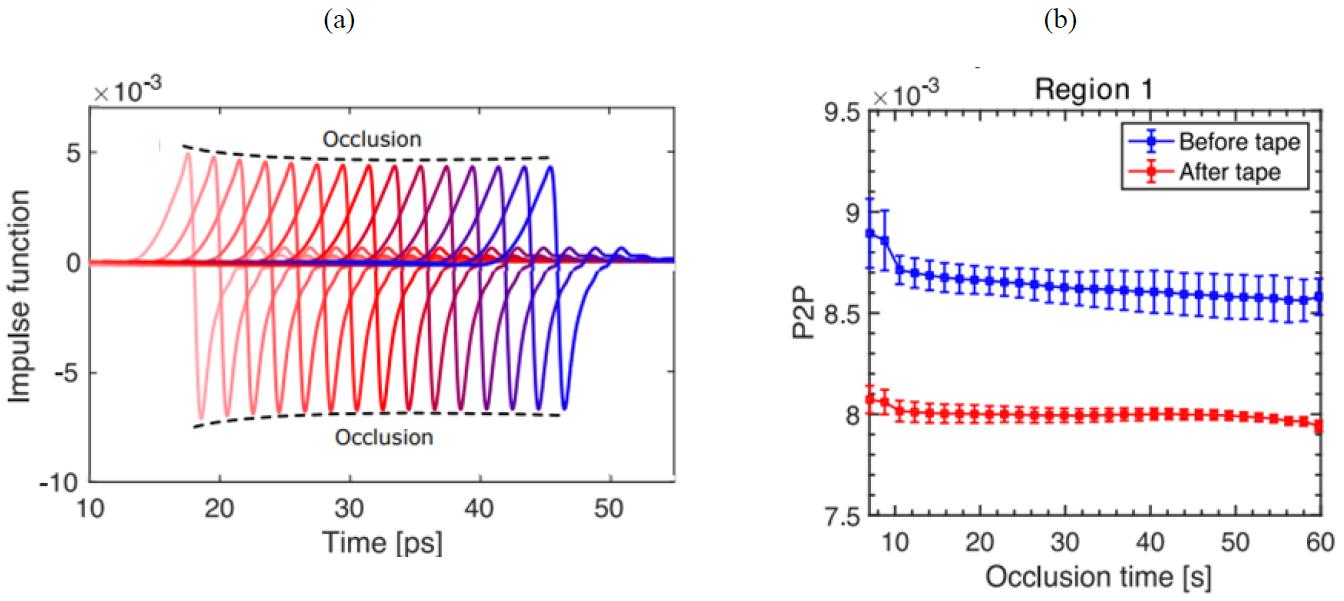| PREVIOUS PRESENTATION | BACK TO PROGRAM OVERVIEW | NEXT PRESENTATION |
Terahertz in vivo skin sensing – the largest study to date
Emma Pickwell-MacPherson1,2,*, Xuefei Ding1, Arturo I Hernandez-Serrano1, and Jacob J. Young1
1University of Warwick, Department of Physics, Coventry, CV4 7AL, UK
2Institute of Applied & Translational Technologies in Surgery (IATTS), University Hospital Coventry and Warwickshire, Coventry, CV2 2DX, UK
*e.macpherson@warwick.ac.uk
We have recently reported on over 300 participant measurements in the largest in vivo terahertz (THz) study of human skin to date [1]. The study was conducted in a non-laboratory environment at Warwick university. Ethical approval for the study was given by the Biomedical Scientific Ethics Committee, BSREC, (REGO-2018-2273 AM03) prior to the study. The forearm of volunteers was measured as depicted in Figure 1a, using a handheld THz scanner. The volar part of the forearm was chosen for measurements as it is generally not hairy, is easy to access and offers a relatively uniform area to measure. The THz scanner was developed by using 3D printing to build a compact and flexible holder for the Menlo TeraSmart emitter and detector and customized optics. Human skin is comprised of several layers, the main ones being the epidermis and the dermis. The stratum corneum (SC) is the outer most layer of the epidermis and is dryer than the skin beneath it. We know from Raman studies that there is a water concentration gradient across the SC [2]. In our recent work [1,3] we have used stratified medium theory to model the skin and extract the SC thickness and hydration. Our experimental findings match well with the theory.

Figure 1: (a) Photograph of a volunteer being measured on the volar forearm using the handheld THz scanner. The screen in the background displays the real time THz impulse function. (b) A schematic diagram of the key layers of the skin. (c) A diagram to illustrate how water accumulates in the stratum corneum (SC) when the quartz window of the probe contacts the skin.
As illustrated in Figure 1c, when the quartz window of the THz probe contacts the skin, it stops water from perfusing out of the SC, and as such, water accumulates in the SC during the measurement. This change due to occlusion is noticeable and can be nicely monitored in 60seconds – Fig. 2a illustrates how the THz response is affected by this process. The impulse functions plotted show that the peak-to-peak (P2P) decreases with duration of the occlusion process. Thus, the blue impulse function represents more hydrated skin than the pink/red impulse function. Similarly, from our simulations (detailed in [1]) we predicted that the occlusion curve would shift vertically down if the SC became thinner, and we verified this experimentally by measuring the skin before and after tape stripping – see Fig.2b. Tape stripping is when a piece of sticky tape is applied to the skin and then removed – when the tape is removed it takes with it some of the outermost skin cells too. In this invited talk, I will explain these findings in detail and also discuss other results and future work.

Figure 2: (a) impulse functions reflected off the volar forearm during 60 seconds of occlusion. Blue represents more hydrated skin. (b) The peak to peak (P2P) response of the skin during a 60 second measurement before and after tape stripping.
Acknowledgements
The authors gratefully acknowledge support from the Engineering and Physical Sciences Research Council (EP/S021442/1 and EP/V047914/1), Cancer Research UK (C71817/A30093), the Royal Society (Wolfson Merit Award-EPM), and the Health GRP at the University of Warwick.
References
[1] Hernandez-Serrano, A.I., Ding, X., Young, J., Costa, G., Dogra, A., Hardwicke, J. and Pickwell-MacPherson, E., 2024. Terahertz probe for real time in vivo skin hydration evaluation. Advanced Photonics Nexus, 3(1), pp.016012-016012.
[2] Caspers, P.J., Lucassen, G.W. and Puppels, G.J., 2003. Combined in vivo confocal Raman spectroscopy and confocal microscopy of human skin. Biophysical journal, 85(1), pp.572-580.
[3] Hernandez-Serrano, A.I., Ding, X., Costa, G., Nurumbetov, G., Haddleton, D.M. and Pickwell-MacPherson, E., 2024. Effect of transdermal drug delivery patches on the stratum corneum: in vivo inspection with a handheld terahertz probe. Biomedical Optics Express, 15(5), pp.3064-3075.
